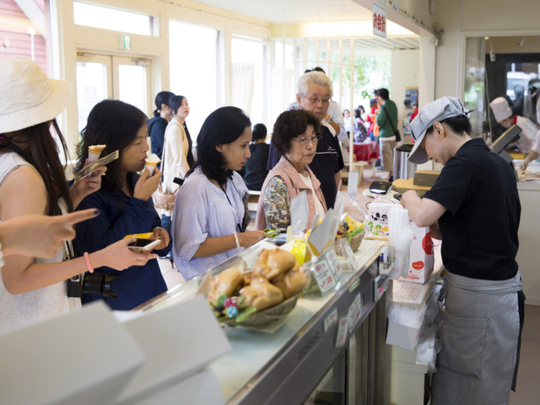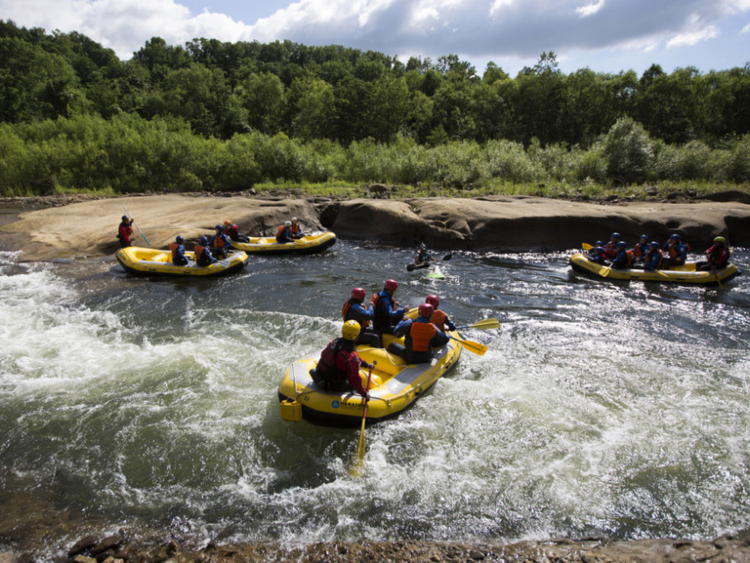
Tokyo
Japan’s shrinking population has weighed on the world’s third biggest economy, alarmed government forecasters and turned some rural communities into veritable ghost towns.
Not so in Niseko, a ski resort community on the nation’s mountainous, northern island of Hokkaido that’s prospering in the face of all the demographic gloom. The local government has embraced immigration in a way the national government hasn’t. The area’s booming economy has spurred investment in luxury hotels, restaurants, and shops-and attracted local and expat workers who’ve become full-time residents.
Niseko’s population grew 2.9 per cent last year to 4,952 compared with 2010 levels, the highest mark in four decades. Nationwide, the population slid 0.7 per cent over the same period.
“There haven’t been any other towns that have been this successful before,” said Tatsuya Wakao, a consultant at Fujitsu Research Institute. “They did a good job in recognising the need for foreign tourism.”
True, not every rural community is blessed with the ski slopes and hot springs that Niseko enjoys. Should the town’s much larger neighbour Sapporo win its bid to host the Winter Olympics in 2026, Niseko would host the Alpine events for the games and enjoy an economic windfall.
That said, other Japanese ski resorts and tourism centres have fallen on hard times and Niseko offers broader lessons to all struggling rural towns about the power of savvy and sustained marketing.
Seiji Ohsaka, who served as mayor of Niseko from 1994 to 2005, realised early on that he needed to turn his town into a must-see resort destination. He dispatched staff to Hong Kong, Taiwan and Vail, Colorado, to talk up Niseko and study competitors. As a result, the number of visitors during the ski season has surged in the past six years — and last year hit a record 811,000 visitors.
“I knew it would be impossible to turn around the domestic market, which is why I sent staff overseas on promotions,” says Ohsaka. “I opened their eyes to the outside world.”
The intelligence gathering paid off. The number of foreign tourists has increased more than 10-fold over the past 11 years.
The popularity of the area is also shared with neighbouring town Kutchan, which also has slopes on the shared mountain and where many hotels are being developed. What used to be a sleepy scenic ski resort just a decade ago is now home to numerous new hotels and shops carrying English signs more commonplace in Tokyo than the Japanese countryside.
Residential land prices in the town are increasing at the fastest pace in Japan, surging 20 per cent as of January, compared with a decline overall in Japan.
The area has the most snowfall on average of any major resort in Asia, and second-highest in the world, behind only Mount Baker in Washington State. Niseko was rated the best ski resort in Japan last year for the third year in a row by the World Ski Awards.
“Some people will say it’s the best snow you will ever experience,” said John Barton, the head of Niseko Management Service Co., a holiday provider, who moved to the area almost eight years ago and now has a 4 year-old son. “In a way, it’s like St. Andrews golf course.”
Unlike many other debt-burdened regional governments, Niseko is running a balanced budget as it has privatised the operation of hot spring facilities and passed tourism operations to a local company. A rival and nearby ski resort community, Yubari, filed for bankruptcy a decade ago amid failed plans to attract tourists.
The resort community has seen a surge in full-time foreign residents. Ben Kerr, owner of Niseko Green Farm and Niseko Real Estate Co, started visiting the area for skiing in 1996. He then stayed for a summer and “then decided to stay up here,” he said.
Kerr, who is married and now has three children, started a real estate company and then a farm, where he grows organic vegetables, which he supplies to restaurants locally and in Tokyo.
The city became more of a draw to foreigners with the 2011 opening of the HIS Niseko international school. “We have people from five different countries working in the town hall,” said Kenya Katayama, who has been mayor of Niseko since 2009.
Baby boomlet
The influx of people has also helped push up the number of babies in the area. The average birth rate has jumped, reaching 9.9 births per 1,000 people in the year ended March 2014, while nationally sliding to 8.0 last year. The popularity of the area has helped make it only one of five out of 20 places in its sub-prefecture of Hokkaido to boost jobs in recent years.
It’s not just tourists from overseas that are helping Niseko’s economy, locals are also going abroad to learn new techniques to expand their business.
Mamoru Takahashi, founder and president of Milk Kobo, which runs a dairy farm, shop, cafe and restaurant in Niseko, sent his wife and two staff overseas to study cheese-making in Italy. He plans to add a cheese factory making mozzarella and other types of Italian cheese to sell to restaurants and shops.
“I never have imagined Niseko would turn out like this,” said Takahashi.
To keep the economy on firmer footing, Niseko is diversifying into white-water rafting, horse-riding and golf to attract visitors the year round.
— Bloomberg













